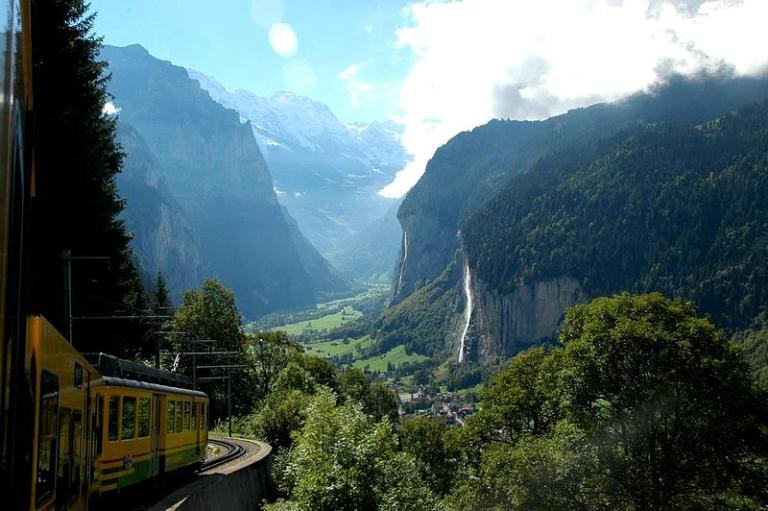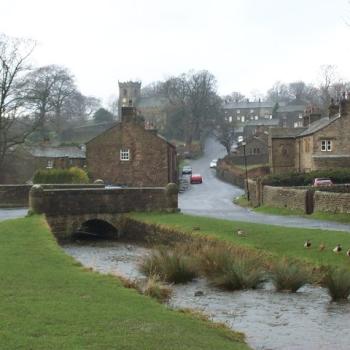
***
Interpreter Radio Show — March 27, 2022
In this archived episode of the Interpreter Radio Show, Steve Densley, Matthew L. Bowen, and Mark J. Johnson discuss the anthropomorphic nature of God with special guest Daniel C. Peterson. That’s during the program’s first hour. The second hour of the show is devoted to a roundtable discussing the upcoming Come Follow Me lesson #19 (Exodus 35–40; Leviticus 1; 16; 19). The Interpreter Radio Show can be heard live each and every Sunday evening from 7 to 9 PM (MDT), on K-TALK, AM 1640. Or, if you prefer (or, living outside of the Salt Lake Valley, have no other choice), you can listen live on the Internet at ktalkmedia.com.
Interpreter Radio Show — April 3, 2022
This installment of the weekly Interpreter Radio Show features Neal Rappleye, Jasmin Rappleye, and Hales Swift. During the first hour of the program, they recap General Conference. During the second portion of the show, they participate in a scripture roundtable in which they discuss the upcoming Come Follow Me lesson #20 (Numbers 11–14, 20–24). The live Interpreter Radio Show can be heard on Sunday evenings from 7 to 9 PM (MDT), on K-TALK, AM 1640. It’s also available via the Internet at ktalkmedia.com.
***
I absolutely love the cover art for the new third volume of Saints: The Story of the Church of Jesus Christ of Latter-day Saints, which is subtitled Boldly, Nobly and Independent. (Whose idea was it, by the way, to omit the comma after Nobly? One of my few areas of genuine militancy involves the “Oxford comma,” for which I’m a fierce and lifelong partisan.)
Why do I love the illustration? Because it’s from my mission. I served in the old Switzerland Zürich Mission. I’ve been back many times; whenever possible, I’ve tried to drop through Switzerland en route to and from the Middle East. (Clean, green, orderly, and peaceful, it’s something of an antithesis to the Middle East.) If things go according to plan, thanks to a remarkably kind and generous offer from a friend I’ll be there again later this summer.)
So I’m absolutely delighted that there, right in the center of the cover design for Saints, is the Bern Switzerland Temple, which is actually located just outside of Bern in the suburban community of Zollikofen. I was assigned to the Zollikofen area itself for several months, and I spent over half of my mission in the larger canton of Bern, in which Zollikofen lies. For approximately seven months, I was stationed in Interlaken, the principal town of the magnificent Berner Oberland region. The three peaks at the center of the mountain range depicted directly behind the temple are probably the most famous mountains in the Berner Oberland: the Eiger (on the left), the Mönch (in the middle), and the Jungfrau (on the right). Based on my experience, the Berner Oberland — including spectacular Grindelwald and (my personal favorite) the achingly lovely Valley of Lauterbrunnen — would definitely get my vote as the most beautiful place on Earth. My concept of what heaven must be like bears no small resemblance to the mountains and valleys of this area. And if the accounts of those who have caught a glimpse of heaven are accurate and it is, as they report, even more beautiful than Lauterbrunnen and the other valleys of the Bernese Alps, then any effort expended on getting there will be a million times worthwhile. (I believe that I’ve mentioned here before that J. R. R. Tolkien’s depiction of the Valley of Elrond and of the elven area of Rivendell was evidently inspired by his hiking in Lauterbrunnental, and that the massive and dangerous mountain that he called Caradhras, one of the mightiest peaks in the Misty Mountains, was modeled upon the Jungfrau.)
Added note 1: My wife and I will be going up to the Church History Library in Salt Lake City this evening for an invited event marking the release of this new volume.
Added note 2: The origin of the name Eiger (for the northeastern peak of the three mountains to which I’ve referred) is unclear. In its earliest appearance, which is in Latin, it is the mons Egere (“Egere mountain”) — which may or may not be related to the Latin word acer, which means “pointed” or “sharp.” (Think, for example, of an “acerbic wit.”) Some have suggested that Eiger is related to the German word Oger, which has the same meaning as, and is obviously related to, the English term ogre. Others have thought to connect it with the English word eager, which, already in the late thirteenth century, had acquired the sense of “”strenuous, ardent, fierce, angry,” and, by the early fourteenth century, was being used with the meaning of “full of sharp desire.” It too derives from the Latin acer (“keen, sharp, pointed, piercing; acute, ardent, zealous”) via the Vulgar Latin acrus (think of an “acrid smell”) and the Old French aigre (“sour, acid [compare vinegar]; harsh, bitter, rough; eager greedy; lively, active, forceful”). Now, you may be wondering what the point of all this etymological pedantry might be. (The etymological information is all readily available online.) I’ve been setting up a venerable joke from the region. And here’s the punchline, for which either eager or ogre will serve: Residents of the Berner Oberland are fond of pointing out that, in their beloved Alps, the Mönch (“the Monk”) stands between the Eiger and the Jungfrau (“the Maiden” or “the Virgin”), restraining him and protecting her.
***
But back to a more serious note. The image on the cover of the new volume of Saints depicts mountains and a temple. And that is perfectly appropriate: Temples have been associated with mountains, and sacred mountains have been thought of as temples, as the dwelling places of the divine — and have even, sometimes, functioned as temples — around the world for much of human history. It’s entirely fitting, in that light, to close this blog entry with a news item, and a link to a video, concerning a modern instantiation of the Mountain of the Lord’s House:












